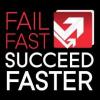Related Content
 |
Developing and Testing IoT and Embedded Systems: Questions to Ask Self-driving cars are the new big thing, and the operational and environment scenarios these vehicles will encounter are practically infinite. How we should develop and test these systems is a big question, and there are no easy answers. But Jon Hagar has some ideas about where to start. |
|
 |
Are We Sacrificing Quality for the Sake of Speed? Are we reducing the quality of our code by pushing teams to produce at a speed that might be too fast? Will the final product require multiple updates in order to fix bugs missed along the way? Like just about every question posed about agile, it can depend on the specific team makeup. |
|
 |
How to Effectively Transition from Waterfall to Agile App creation has changed drastically over the past fifteen years, and for many teams, the journey from waterfall to agile has been a challenging one. Sanjay Zalavadia describes three strategies that businesses can use to successfully transition from waterfall to agile processes. |
|
 |
3 Major DevOps Roadblocks You Need to Consider Just because DevOps has proven to be successful in establishing better communication between development and operations teams, it doesn’t mean it’s easy. In fact, there are quite a few obstacles that teams of varying sizes will face when undergoing a DevOps transformation that are impossible to ignore. |
|
 |
Fail Fast: Embrace Failure to Encourage Success Fear of failure can hold you back from learning and creating new things. Conversely, creating an environment where it’s safe to fail shows that progress toward mastery is just as important as achieving mastery. A leader who encourages failing fast will have a team where everyone is performing at their best. |
|
 |
Think Agile to Work Efficiently and Effectively Of course it's important to work efficiently, without wasting time, money, or energy. But working effectively is just as important. Agile cycles between creating, testing, and getting feedback, allowing us to work in small chunks and make sure what we're producing has the most value. That's effective. |
|
 |
Shake Up Your Software Processes: The Intermediate Disturbance Hypothesis Organizations that refuse to change will get left behind. But at the other end of the spectrum, too much change is also harmful. Revamping everything you do at once creates stress and can lead to your efforts failing. The right balance is shaking things up just often enough to experiment with new ideas. |
|
 |
Scaling Product Agility: More Product, Not More Process Focusing on scaling product discovery that feeds product delivery is valuable to scaling frameworks. A cross-team product discovery cadence highlights work that's valuable to everyone and facilitates workflow for all the teams, helping them produce more of what they really need (and less of what they don’t). |







